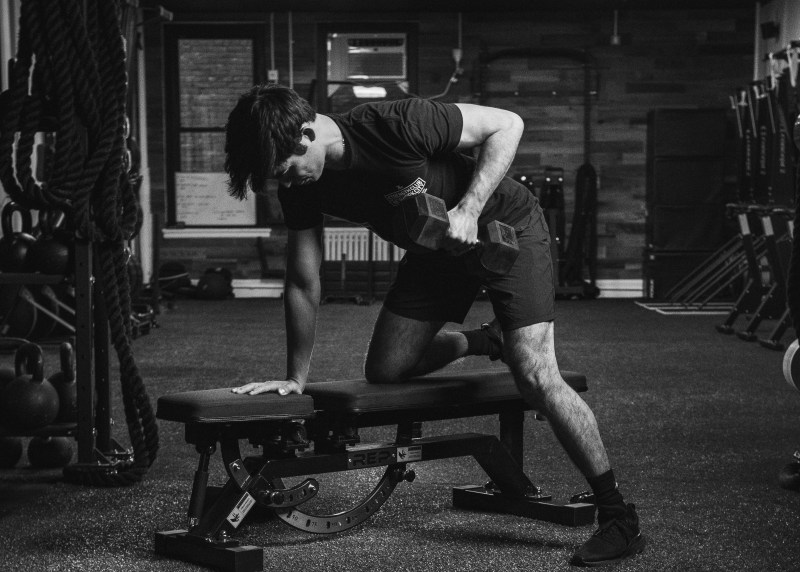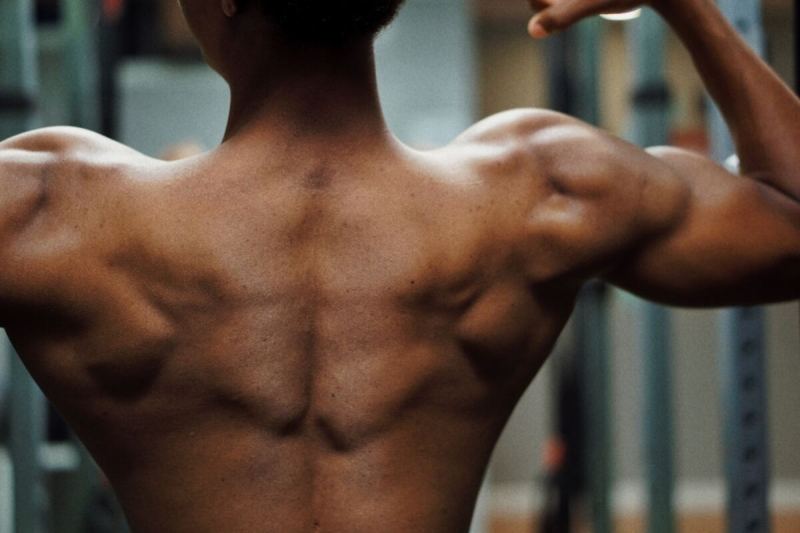
Your back muscles are just as important as any other muscle group. They can help you maintain good posture when you stand or sit, prevent damage to your back that may lead to certain spinal abnormalities, and allow you to move your head and limbs to perform everyday tasks.
Using one barbell is effective enough in strengthening your back muscles. However, using two smaller dumbbells instead of one large barbell can be just as effective while also providing more versatility. This means that there are countless exercises that you can do that cannot be done with just one barbell.
With that said, what are the best dumbbell workouts to build your back?

What muscles make up the back?
Your back consists of various skeletal muscles that allow you to move and provide structural support for your torso. The most commonly known back muscles include the following:
- The latissimus dorsi (lats) that comprise your sides
- The levator scapulae, which are connected to your shoulder blades
- The rhomboids
- The trapezius muscles (traps)

How often should you train your back?
In general, it is best to train your back muscles for two to three non-consecutive days within one week. Attempting to work out too much can gradually lead to significant health risks and overall fatigue.

Can you build your back with only dumbbells?
Dumbbells alone can provide a decent workout for your back, but that does not mean you should exclude other types of exercises. For best results, integrate dumbbell exercises into a varied workout, including cable machine exercises and even those that require no equipment.
However, if you only have access to dumbbells, you can certainly make great progress with dumbbell back exercises alone.

5 dumbbell exercises for a stronger, broader back
Dumbbell rows
This classic exercise is simple to perform even for beginners, as it only requires one dumbbell and a bench (ideally a weight bench). This exercise targets your upper back muscles.
Instructions:
- Stand next to a weight bench with one dumbbell next to it on the side you want to work out. Lean on the weight bench using the hand and knee on the opposite side.
- Reach down and grab the dumbbell with your free arm.
- Pull your elbow up and back, keeping your upper arm near your side. Then, lower it back down to the starting position to complete one rep.
- Perform 3 sets of 8 to 12 reps per side.
Rear flyes
Similar to the exercise previously mentioned, this one is both easy for beginners and effective in toning upper back muscles. The main difference is that this one is done without a bench, making it easier to perform at home if you don’t have one.
Instructions:
- Stand with your feet shoulder-width apart, holding a dumbbell at each side. Hinge forward at your hips to form a 45-degree angle. Position the dumbbells to be at your body’s midline, and you want your palms to be facing each other.
- Keep a slight bend in your elbows, and raise your arms out to your sides towards your spine until your arms are parallel to the floor.
- Slowly lower the weights back to the starting position to complete one rep.
- Perform 2 to 3 sets of 12 to 15 reps.
Weighted Supermans
Not only is this exercise effective in strengthening the lower back muscles for better posture, but it is also suitable for toning your glutes and core if you’re aiming for these as well.
Instructions:
- Lie on your abdomen with your forehead against the ground. Keep your legs at hip distance, and hold out your arms straight ahead so your biceps are next to your ears, holding only one dumbbell with both hands.
- Slowly raise your arms to lift the dumbbell a few inches off the ground. At the same time, lift your thighs and chest off the ground as well.
- Slowly lower your arms, legs, and forehead back to the ground to complete one rep.
- Perform one set of 10 to 15 reps.
Alternating renegade rows
Although this advanced exercise can target the muscles of your entire body, it is especially effective in toning your lats.
Instructions:
- Get into a full plank position and extend your arms with a dumbbell in each hand pressed against the floor. Keep your spine straight and your feet at hip distance from each other.
- Pull your right elbow back, bringing the dumbbell towards your right hip. Keep your arm close to your side and your hips squared.
- Slowly lower the dumbbell back down to the ground, then repeat the same process on the other arm. This is considered one rep.
- Perform 2 to 3 sets of 5 to 10 reps on each side.
Dumbbell deadlifts
This variation of the traditional deadlift with just one barbell targets multiple muscle groups, including all of your back muscles. Fortunately, it is just as effective in this as the barbell version.
Instructions:
- Stand with your feet at hip width. Hold a dumbbell in each hand in front of your thighs, with your palms facing your body.
- Push your hips back and bend at the waist while also bending slightly at the knees. Lower your torso until it’s almost parallel to the floor, maintaining a flat back. Hold this position for one to two seconds.
- Slowly, come back to standing. This counts as one rep.
- Perform 2 to 3 sets of 6 to 12 reps.



